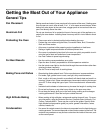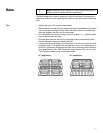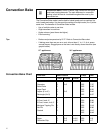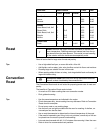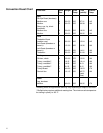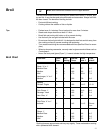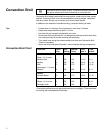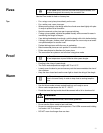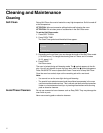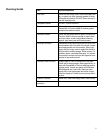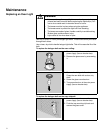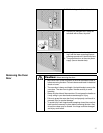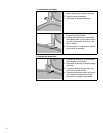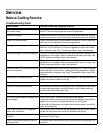
31
Pizza
Use the Pizza mode for fresh or frozen pizza.
Tips • For a crispy crust, place pizza directly on the rack.
• For a softer crust, use a pizza pan.
• When proofing dough, coat dough with olive oil and cover bowl tightly with plas-
tic wrap to prevent crust formation.
• Sprinkle cornmeal on the pizza pan to prevent sticking.
• If using a pizza paddle, sprinkle the paddle liberally with cornmeal for ease in
transferring the dough to the pan.
• If par-baking handmade pizza dough, prick the dough with a fork before baking.
• If using a pizza pan, choose a dark, perforated pan for a more crisp crust and a
non-perforated pan for a softer crust.
• Preheat baking stones while the oven is preheating.
• Bake homemade pizzas on rack position 2 in center of the rack.
• Follow manufacturer’s directions for frozen pizza.
• The convection fan cycles on and off when using pizza mode.
Proof
• Proofing is the rising of yeast dough.
• The Proof mode temperature range is 85 ºF to 110 ºF.
• Loosely cover the bowl or pan and use any rack that accommodates the size of
the container.
• Keep the door closed and use the oven light to check the rising of the dough.
Warm
• Use the Warm mode to keep cooked foods hot until ready to serve.
• Warm mode temperatures are 140 ºF - 220 ºF.
• Foods that must be kept moist should be covered with a lid or aluminum foil.
• Do not use the Warm mode to heat cold food.
• Be sure to maintain proper food temperature. The USDA recommends holding
hot food at 140 ºF or warmer.
• DO NOT warm food longer than one hour.
á
In the Pizza mode, heat from the lower and upper elements is cir-
culated throughout the oven by the convection fan.
t
In Proof, the oven uses the upper and lower elements to maintain
a low temperature to proof bread or other yeast doughs.
t
In Warm, the upper and lower elements maintain a low tempera-
ture in the oven cavity in order to keep food at serving tempera-
ture.
m
Caution:
When using Warm mode, follow these guidelines:




